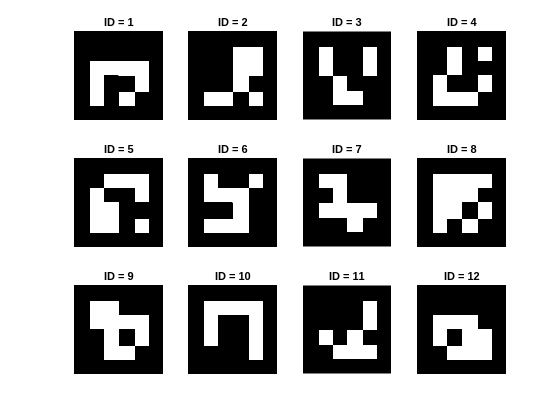generateArucoMarker
Syntax
Description
imgs = generateArucoMarker(markerFamily,ids,markerSize)imgs of the specified family
markerFamily and size markerSize with the
corresponding identifiers ids.
imgs = generateArucoMarker(___,NumBorderBits=numBits)numBits as a positive
integer value. The default value is set to 1.
Examples
Input Arguments
Output Arguments
Version History
Introduced in R2024a
